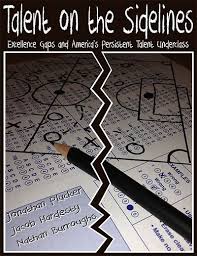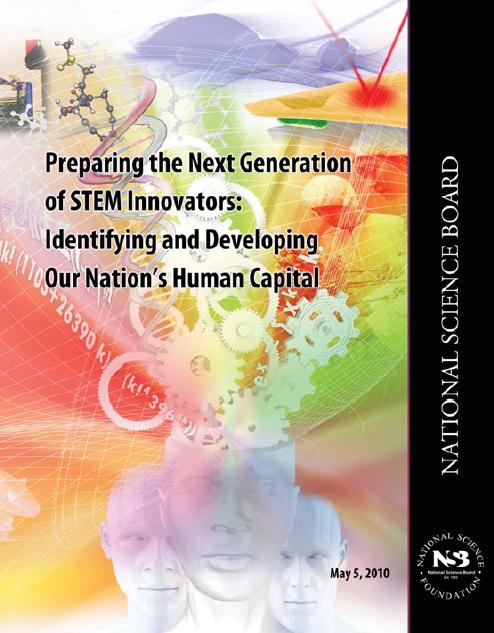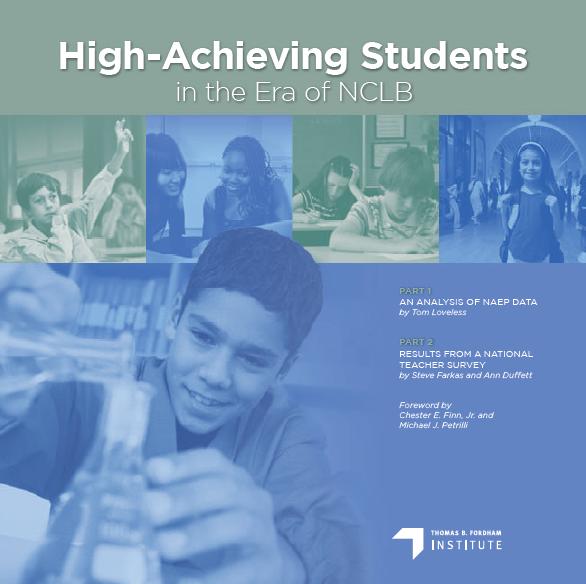NAGC works to support those who enhance the growth and development of gifted and talented children through education, advocacy, community building, and research
Diverse Learners
Is There a Gifted Gap? Gifted Education in High-Poverty Schools
Christopher B. Yaluma and Adam Tyner, Thomas B. Fordham Institute, 2018
Equal Talents, Unequal Opportunities
This report from the Jack Kent Cooke Foundation looks at state policy and student achievement to evaluate states on their support of high-achieving, low-income students.
Download
Unlocking Emergent Talent: Supporting High Achievement of Low-Income, High-Ability Students
Recommendations from an NAGC summit for practice, policy, and research for low income, high-ability children. Download
Overlooked Gems: A National Perspective on Low Income Promising Learners
NAGC brought together experts to distill decades of research on bringing out the best in high-ability students from disadvantaged backgrounds and map priorities for action. Download
In Search of the Dream
A look at how some schools and programs successfully address the problem that gifted and talented students from minority and/or low-income backgrounds do not receive the education they need to develop to their full potential. Download
The Twice-Exceptional Dilemma
Students who have exceptional ability, but also have a disability are often difficult to identify and serve. This guide will look at identification and service options to ensure these students can have their disability addressed while also achieving at the highest levels. Download
The Achievement Gap
Talent on the Sidelines: Excellence Gaps and the Persistence of America’s Permanent Talent Underclass
A state-by-state comparison as well as policy recommendations regarding the growing “Excellence Gap” between socioeconomic and ethnic groups, which has left behind unrecognized talent. Download
Mind the (Other) Gap! The Growing Excellence Gap in K-12 Education
High-potential children from diverse backgrounds are not performing at the advanced levels at the same rate as other children. Download
The Achievement Trap
Examining data that shows high-ability students from lower-income families lose ground academically as they progress through school and looks at possible solutions to this problem. Download
High-Achieving Students in the Era of NCLB (part 1 of a 2-part report)
While lowest-achieving youth made rapid achievement gains from 2000 to 2007, the performance of top students was languid. Download
Do High Flyers Maintain Their Altitude? Performance Trends of Top Students
Many high-achieving students struggle to maintain their elite performance over the years and often fail to improve their reading ability at the same rate as their average and below-average classmates. Download
Civil Rights Data Collection: Data Shapshot (College and Career Readiness)
Students from diverse backgrounds do not have the same access to core academic coursework, advanced classes, and gifted programs as do their white and more well-off peers. Download
Science, Technology, Engineering & Mathematics (STEM)
Preparing the Next Generation of STEM Innovators: Identifying and Developing our Nation’s Human Capital
Recommendations from the National Science Board to help ensure a legacy of continued prosperity and a renewed aspiration towards equity and excellence in U.S. STEM education. Download
Prepare & Inspire: K-12 Education in STEM for America's Future
Strategies for improving K-12 STEM education from the President's Council of Advisors. Download
School & Classroom Practice
Results from a National Teacher Survey (part 2 of 2-part report)
While more resources and time go to struggling learners, teachers have had to let high-ability learners fend for themselves with the result that their academic gains are slowing, especially among students from low-income families. Download
National Survey of Gifted Programs (4-part report)
The University of Virginia conducted a national survey of elementary, middle, and high schools to develop a national portrait of the the current status of gifted programs in the U.S. Read the Executive Summary, the report on gifted education in elementary schools, the middle schools report, and the high school summary.